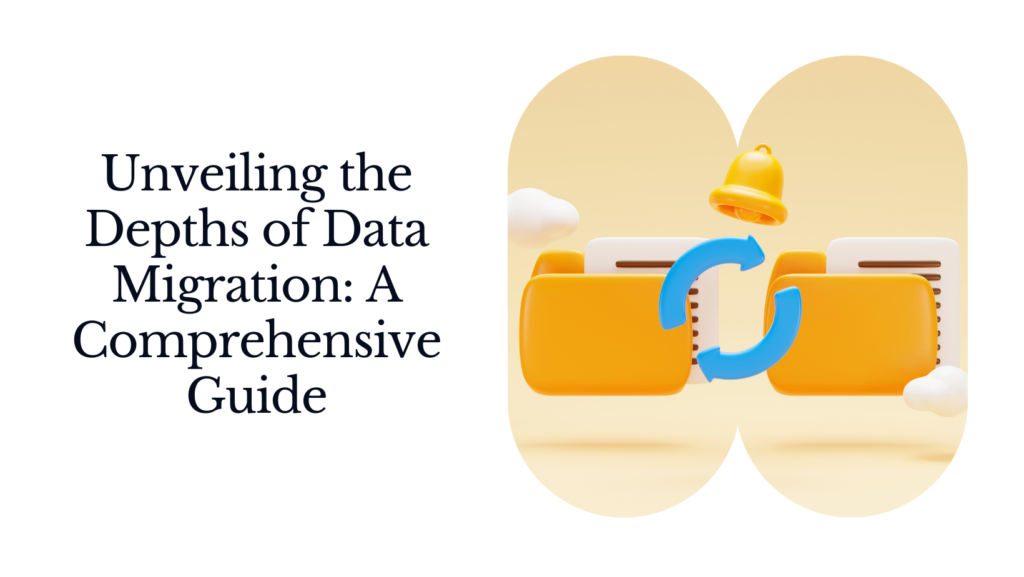How does Data migration work? : A Comprehensive Exploration

Data migration, the intricate process of relocating data from one system or storage location to another, stands as a linchpin in the dynamic landscape of organizational efficiency. Whether the aim is data consolidation, storage optimization, or workflow streamlining, the profound impact of data migration is undeniable. In this detailed exploration, we delve into the intricacies of data migration, unraveling the steps involved, addressing potential challenges, and outlining best practices.
Unpacking the Fundamentals
Planning
A meticulously crafted plan lies at the epicenter of a successful data migration initiative. This involves defining the project’s scope, pinpointing the data set for migration, and establishing a well-structured timeline and budget. For instance, envision a scenario where a multinational corporation decides to migrate customer data from legacy systems to a unified CRM platform, aiming to enhance customer relationship management.
Data Profiling
The second step, data profiling, demands a thorough analysis of source data. Imagine an e-commerce giant preparing for data migration – data profiling would involve scrutinizing product databases, analyzing sales trends, and identifying potential outliers or discrepancies in the data set.
Data Cleansing
Data cleansing, the third step, is a critical process that involves rectifying or eliminating data quality issues unearthed during the profiling phase. Continuing with our e-commerce example, this might involve cleaning up customer records, standardizing addresses, and ensuring data consistency across the entire database.
Mapping
Data mapping, the fourth step, is akin to creating a navigational chart for data’s journey from source to target. Visualize a scenario where a financial institution is migrating transaction data from a legacy system to a modernized platform. Mapping ensures a seamless transition, defining how the raw transactional data transforms into the new system’s format.
Migration
The actual migration phase, step five, involves the transfer of data from the source system to the target system. Consider a healthcare provider transitioning from paper records to a digital Electronic Health Record (EHR) system. The migration process encompasses transferring patient data, medical histories, and treatment records securely and accurately.
Validation
Data validation, the sixth step, is a critical checkpoint ensuring that the migrated data is not only correct but also complete. Extending our healthcare example, validation would involve cross-referencing patient records in the new EHR system to guarantee accuracy and completeness.
Testing
The final step, testing, validates the functionality of the target system and ensures the migrated data serves its intended purpose. In our healthcare scenario, extensive testing would involve simulating various patient scenarios, verifying data retrieval, and ensuring the EHR system operates seamlessly.
Challenges Encountered in Data Migration
Data Quality
Data quality emerges as a significant challenge, potentially leading to errors and inconsistencies during migration. In the context of financial data migration, incomplete or inaccurate financial records could pose a substantial risk to decision-making processes.
Downtime
Data migration can cause system downtime, disrupting regular business operations. Consider a scenario where an e-commerce platform schedules data migration during off-peak hours to minimize the impact on customer experiences.
Compatibility
Compatibility issues may arise when migrating data between different software applications or databases. Envision a scenario where a manufacturing company transitions from an outdated Enterprise Resource Planning (ERP) system to a modern one, ensuring compatibility is crucial for a smooth migration.
Security
Security concerns loom large during data migration, especially when transferring sensitive or confidential data. In the context of a financial institution migrating customer data, implementing robust encryption measures and adherence to security protocols are non-negotiable.
Best Practices for a Seamless Data Migration
Develop a Plan
A detailed plan serves as the cornerstone for a successful data migration project. Imagine a scenario where a technology company meticulously outlines a plan for migrating vast datasets to a cloud-based infrastructure, encompassing timelines, budget allocations, and contingency strategies.
Test and Validate
Rigorous testing and validation protocols are indispensable for ensuring the accuracy and completeness of migrated data. In a healthcare setting, extensive testing would involve validating the EHR system’s ability to retrieve accurate patient information in various medical scenarios.
Conclusion
In the intricate dance of data migration, each step reveals a layer of complexity and importance. From the meticulous planning required to set the stage to the critical validation ensuring data integrity, the process demands unwavering attention to detail. Challenges such as data quality, downtime, compatibility issues, and security risks underline the need for a strategic and comprehensive approach.
However, beyond the challenges lie the opportunities for transformative change. Consider data migration not merely as a necessity but as a catalyst for organizational evolution. The seamless transition to a more optimized and efficient data landscape is achievable through adherence to best practices, rigorous testing, and continuous validation.
As industries evolve and technology advances, the significance of data migration grows. Organizations that view data migration as more than a logistical challenge but as a strategic initiative for growth will thrive in this ever-changing landscape. By embracing the intricacies of the process, companies can position themselves not just to survive but to thrive, leveraging data as a powerful asset in their journey toward innovation and excellence.

Leave a Reply